If you’re like the general population, you’ve found yourself scratching your head at the term “batik.” Perhaps you have heard the word but haven’t been 100% certain about what it means. Batik is a form of artwork, usually done on textile surfaces, that relies heavily on patterns and the process of masking dyes and inks. To gain a greater appreciation for the work that artisans apply to their craft, first examine Yuni Kristina’s “Harmony”. Repeated modules filled with delicate designs cover the surface of the scarf and are accented by images of flowers and secondary patterns. NOVICA offers a very large selection of batik accessories if you’re looking to get a general feel for the art form.
Typically, patterns such as these require machine-printing due to their intricate and complicated nature. Batik could literally have a translation of “taking the hard way out.” Machines can print several hundred scarves in an hour. In contrast, hand printing or dying a scarf could take days (depending on the number of colors).
Batik can be done one of two ways. The method of printing depends highly on the material. Softer, less absorbent fabrics must be hand-stamped with hand-carved blocks of wood and ink. This method allows for many scarves to be stamped in the exact same way, relatively quickly. “Burgundy Fern” by Melati is a beautiful example of this stamping process on silk. The gold pigment contrasts beautifully with the burgundy background and the delicate leaves and dots provide the viewer’s eye with a lot to take in!
Additionally, silk can be dyed overall after a mask of wax has been applied. This provides a design or pattern (often simple with very little fine detail,) that is the focus of the artwork. The variation is provided in the background and the colors in which the silk is dip-dyed. Vinita’s “Ocean Cliff” is a stunning representation of this process. Larger designs of waves complement colors that are associated with the ocean. The feel overall is both nautical and natural.
Highly absorbent fabrics such as wool and cotton can be dyed. This dying process is much more complicated and time-consuming and must take place over a number of days. The fabric is initially dyed the lightest color, left to dry, and then a coat of wax is applied over the designs and areas that need to retain the initial color. Then, the whole fabric is dipped into the next lightest/darkest color, again allowed to dry, and masked. This process continues until all colors are represented in the fabric. Then, using boiling water, the layers of wax are melted off to reveal the different colors and patterns! It’s a fascinating process and the “reveal” is an awe-inspiring experience! Just imagine the wax falling away from the design on Saktut and Victoria’s “Javanese Chocolate”!
Dying cotton or wool allows for a few more variations on the look of batik. The art form truly has endless possibilities for the outcome! Results range from very neat, clean lines to ones that are more chunky and feature small sections of color, and even to a tie-dye style. A beautiful example of a more carefree design can be found in Saktut and Victoria’s “High Energy.” This piece is one of many robes and kimonos offered by NOVICA and features dark navy sections broken by large areas of white. Every section is different with no defined lines.
Truly, if you’re looking for a unique, involved artistic process, batik is a fantastic option. The results, whether stamped or dyed, are very striking and memorable. One can almost feel the work that goes into the pieces and knowing the process makes them that much more special.

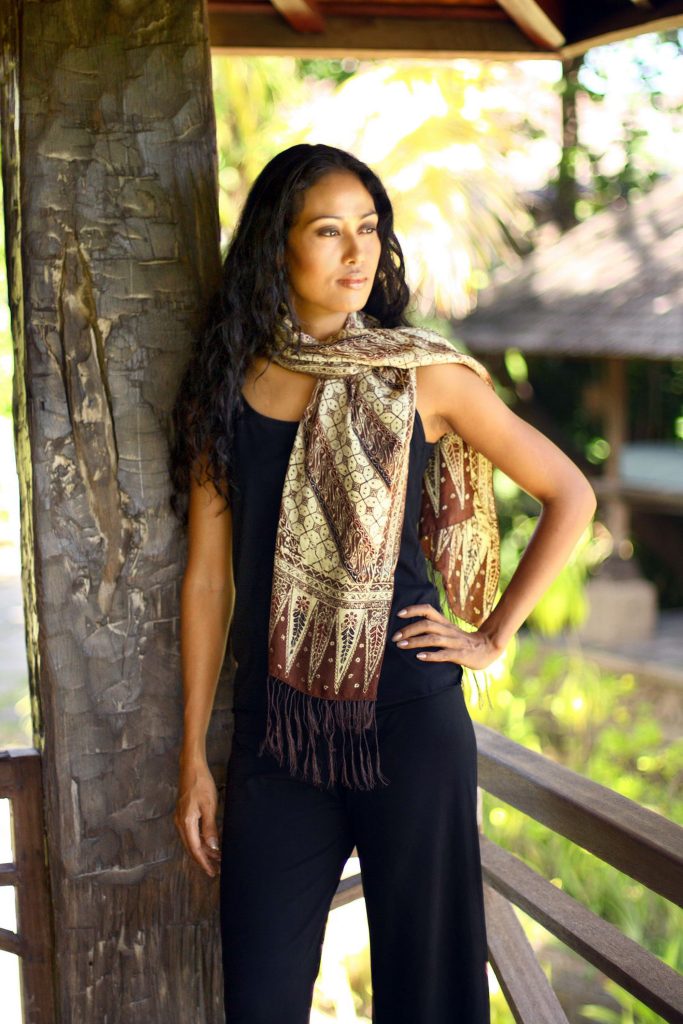
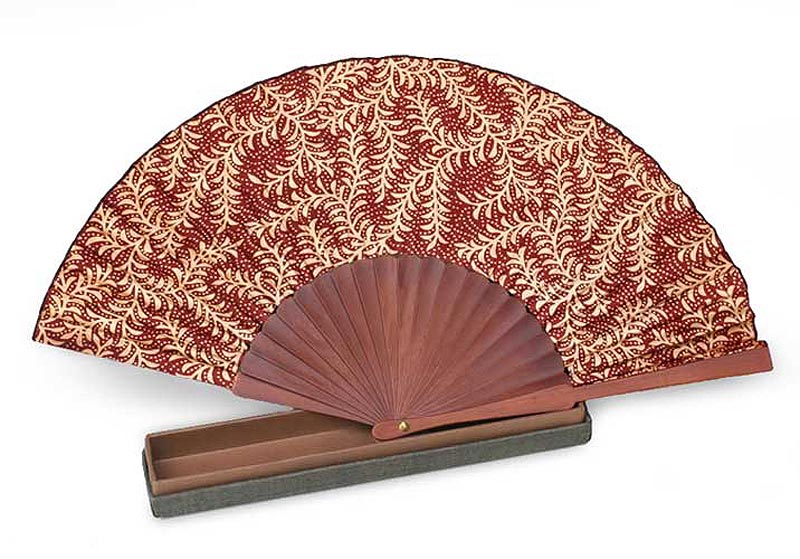
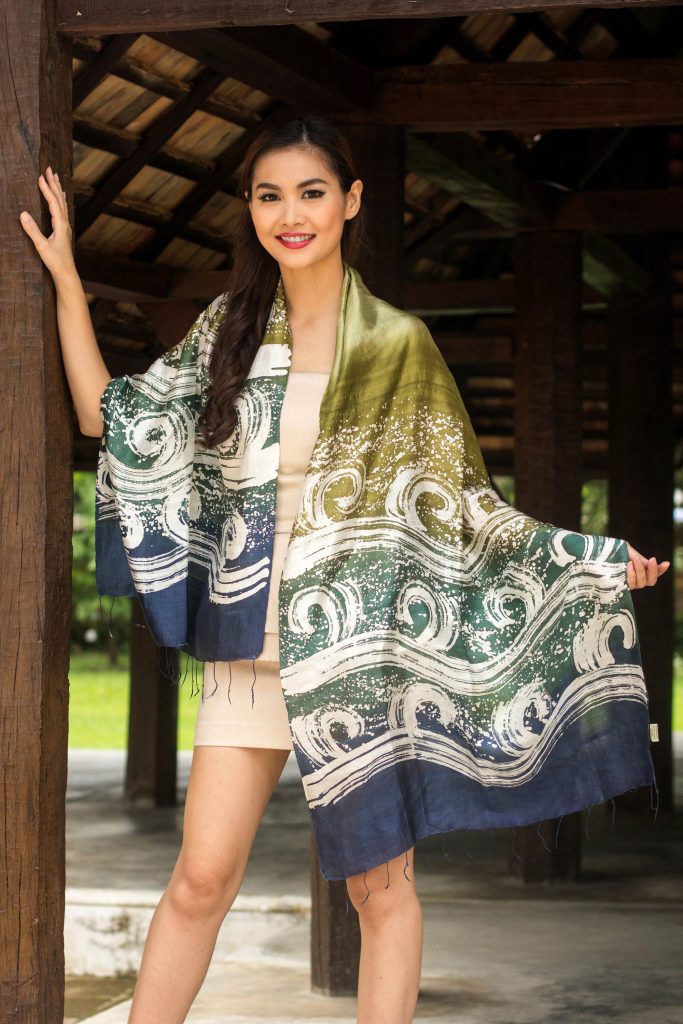
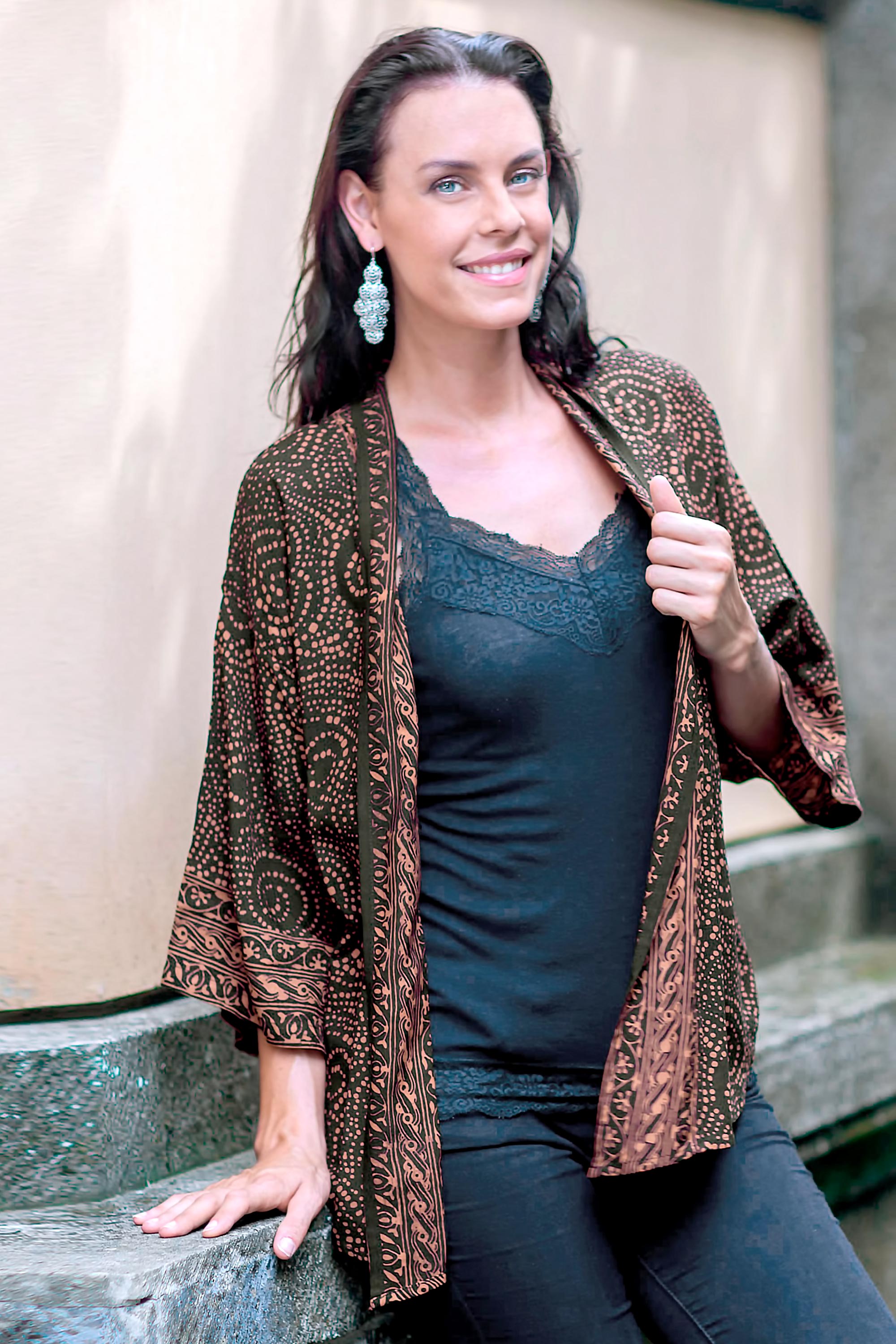
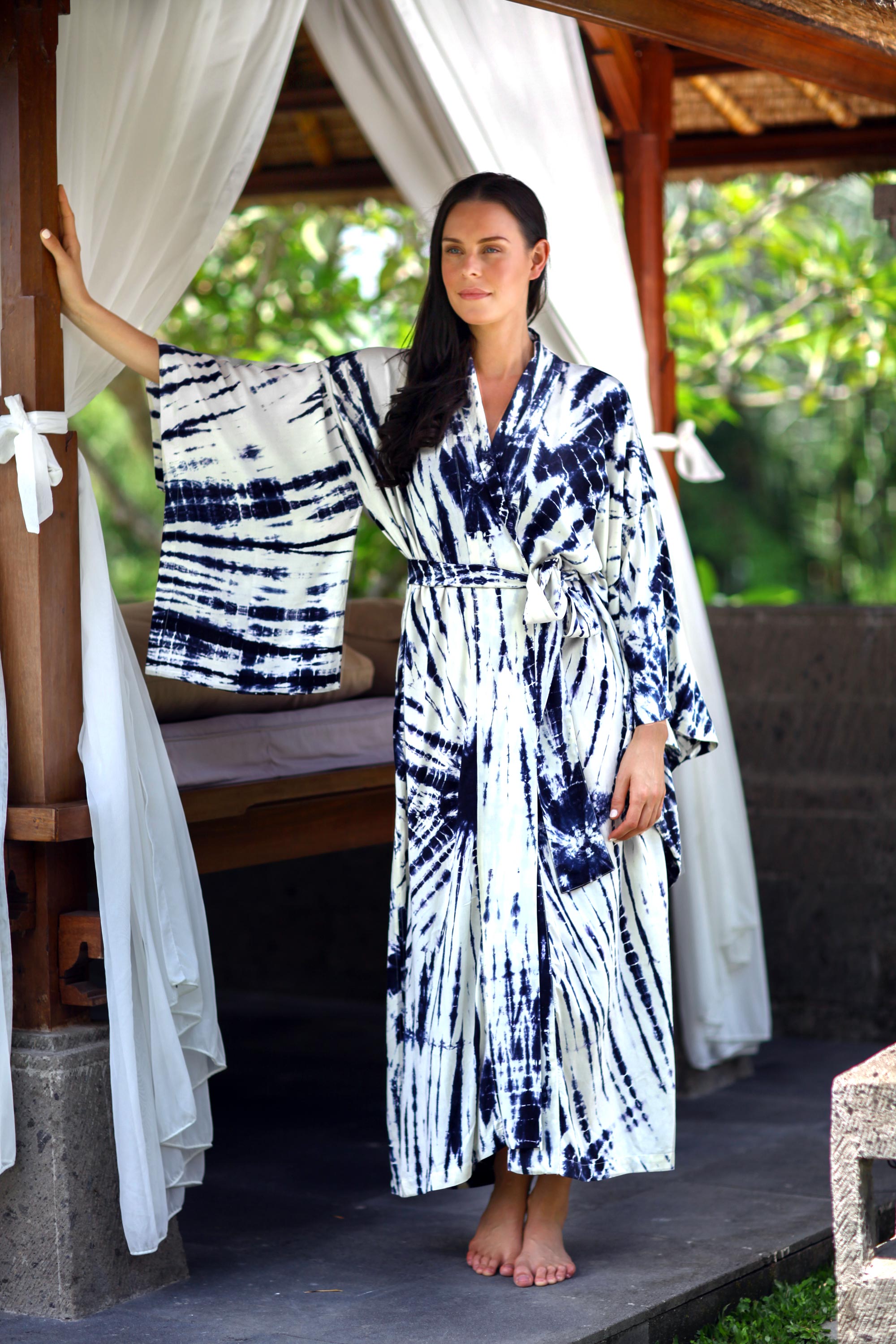



[…] art usually is placed on textiles, involving a variety of dyes or inks. Consider this observation from Ashleigh Davidson, a writer who focuses on handmade art: “Typically, patterns such as these require […]